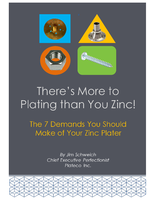ASTM Standard covers penetration testing of surgical needles.
Press Release Summary:
Strength and penetration are key attributes needed for surgical needles. ASTM International standard, ASTM F3014, Test Method for Penetration Testing of Needles Used in Surgical Sutures, focuses on penetration testing of such needles. Having low and consistent penetration force provides users with control for accurate placement of surgical needle during procedure, especially when there is limited space in which to maneuver needle, and when thick or hard tissue is encountered.
Original Press Release:
Penetration Testing of Surgical Needles is Subject of New ASTM Medical Standard
Strength and penetration are key attributes needed for surgical needles. A new ASTM International standard, ASTM F3014, Test Method for Penetration Testing of Needles Used in Surgical Sutures, focuses on penetration testing of such needles.
ASTM F3014 was developed by Subcommittee F04.33 on Medical/Surgical Instruments, part of ASTM International Committee F04 on Medical and Surgical Materials and Devices.
“Having knowledge of a surgical needle’s performance is valuable in selecting the right surgical product for a given procedure,” says Eric Hinrichs, principal engineer, Ethicon, and an F04 member. “A physician or surgeon desires a surgical needle to have a low penetration force and for this force to be consistent throughout the surgical needle’s usable life.”
According to Hinrichs, having low and consistent penetration force provides users with control and, consequently, confidence in the accurate placement of the surgical needle during a procedure, especially in the following situations:
• There is limited space in which to maneuver the needle;
• Thick or hard tissue is encountered that the user must pass the needle through; and
• The user must maintain exact control to avoid vessels or delicate organs around the surgical site.
Needles covered by ASTM F3014 are sold to and for the intended use of physicians and trained licensed professionals only. Such needles are used in all types of surgeries, from ophthalmic to cardiovascular.
The subcommittee plans to include a media standard in future revisions of ASTM F3014. “This may be one or several types of media, depending on how comprehensively a media’s characteristics covers the myriad of tissues that surgical needles encounter,” says Hinrichs. “The important requirements for any media selected is that it be costeffective, readily available and, most importantly, that it be consistent within itself and from manufacturing lot to lot.”
All interested parties, particularly experts in surgical needles and how they must perform and interact with living tissue, are invited to join in the ongoing standards developing activities of F04.33.
To purchase ASTM standards, visit www.astm.org and search by the standard designation, or contact ASTM Customer Relations (phone: 877-909-ASTM;Â sales@astm.org). ASTM International welcomes participation in the development of its standards. For more information on becoming an ASTM member, visit www.astm.org/JOIN.
For more news in this sector, visit www.astm.org/sn-medical or follow us on Twitter @ASTMMedical.
Technical Contact:
Eric Hinrichs
Ethicon Inc., Somerville, N.J.
Phone: 908-218-3177
ehinrich@its.jnj.com
ASTM Staff Contact:
Pat Picariello
Phone: 610-832-9720
ppicariello@astm.org
ASTM PR Contact:
Barbara Schindler
Phone: 610-832-9603
bschindl@astm.org




